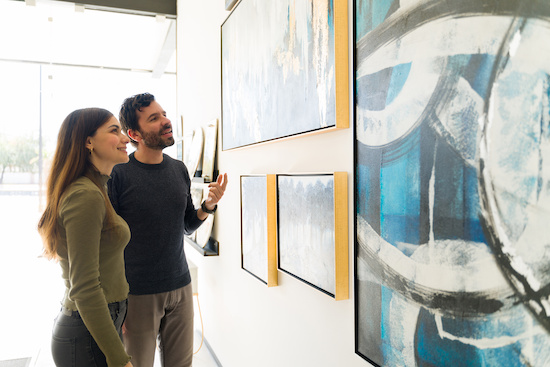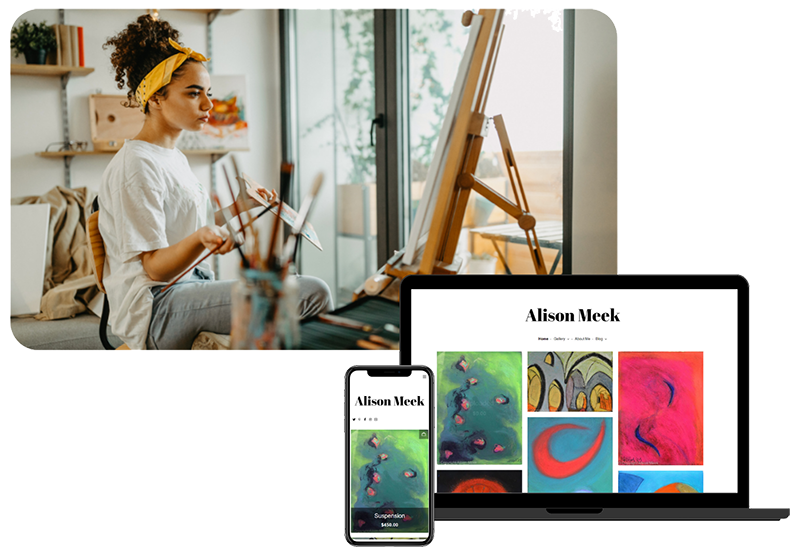After the (hopefully) busy holiday rush of sales and commissions, all artists, whatever discipline or level of practice, should get creative with a plan for the year ahead. There’s plenty to arrange, sign up for, or design months in advance. And with some exhibitions, it can even be years in advance, but we will stick with plans to strive for in 2024!
Plan your visits to exhibitions

No artist should go without visiting exhibitions. It might be the big star attractions in major cities and museums, but it could also be local shows where you can meet your peer group and see what they are up to. This is a good chance to make connections in the art world. Get yourself added to as many guest lists as you can and head to the opening night when all the important people will be there.
Since COVID-19, museums have gotten good at creating virtual tours, so there is no excuse. Pour yourself a coffee and head to virtual events in 2024 too.
Sign yourself up for the Museum of Modern Art’s guided virtual tours. There is an ongoing series of curated events looking at work in their collection, complete with expert guides.
Set up your open studio
The joy of visiting open studio events is to meet local artists and buy their work. But these are slick events that take months to organize. Search for open studios taking place in the UK to find ones that appeal to you. Some are entirely geographical, but some might focus on a wider area in a specific medium, such as Devon’s Drawn to the Valley, which combines open studio and the power of joint marketing with a highly anticipated open show in November and year-round peer support.
Open studios are approachable and open to all. Most events are literally held in studios, and this can mean anything to a professional studio complex to garden shed or corner of your kitchen. Many artists open up a home studio or exhibit outside.
Try social media to find local open studio. Or if none are happening in your area, plan your own.
Plan some marketing themes
Your web content should be constantly evolving, with regular updates. Consider big events that happen every year and plan something around them. If you paint landscapes or flora and fauna, your work might suit seasons. For crafters, there may be big holidays to prepare for; jewelry makers should already be planning for Valentine’s Day, for example. If you create garden sculpture, your business season is going to be spring when we all turn to our outdoor space and sigh. You will need to give yourself at least a month or more to prepare content (and probably longer to create the work), so now is the time to think ahead.
Awareness days and national holidays are easy things to plan for. Some may have an easy connection, while others might be trickier. You can see more information on our article on social media planning.
Get ahead of the trends

It’s easy to sit in our studios painting, sculpting and making and forget about the outside world. But just like fashion, art styles and mediums come and go. Get out and see exhibitions, read about the latest art trends and blog your thoughts on it.
Pantone has released Peach Fuzz as its color of the year. The color has been finding itself in homewares and fashion for several months, so consider using the color in your artwork if it makes sense for your style. Mentioning these trends online, and adding a hashtag or two, will bring interested viewers.
Plan some blogs
If you want to blog, this is a great time to create a plan of what you can cover and when. Remember a great blog is not just about selling your work, it should include some fascinating facts and even a how-to guide. Offering a workshop on how to use color, paint a portrait or offering a digital tour of an exhibition will help build up your profile.
Refresh and refocus

At least once a year, you should refresh your photography. Your work will evolve, and you can only get away with adding new work to your site via a phone camera for so long. Set yourself up with a blank wall, grab a tripod and DSLR camera and get snapping. Check out our tips for photographing your art work.
Update your portfolio
Galleries will plan their exhibitions at least a year ahead. Put together a professional art portfolio and visit local galleries showing you recent works. Include good photography of large works and some smaller pieces. Make sure you have a CV that is up to date too. Many galleries will sell greeting cards and smaller prints, so have a few samples printed that you can leave with the gallerists.
Expand your brand
There will always be a limited number of people able and willing to buy a large painting or sculpture, so try and create gateway pieces. These are smaller, less expensive pieces that people are more likely to buy on a whim. And may ultimately lead to the sale of a larger piece. Consider creating a series of “studies” alongside your major work that can be offered for sale at lower prices. These works need to be distinct from your major work as they will be cheaper. This may mean size, but should also mean scale. For example, landscape artists can create studies of details within a landscape, such as flora and fauna. If you are a sculptor, a similar rule applies.
If you tend to paint in particular geographical areas, now is the time to see if your work might translate into calendars. Abstract artists are increasingly transferring their vibrant colors onto rugs and smaller homewares. Prints and greeting cards are one of the most popular money-spinners; treat them as a marketing opportunity and make sure you perfect the scanning and printing of your work for ultimate wow factor that might bring back buyers for larger purchases.
Make a financial plan

If you want to turn your hobby into a business, you will need a simple financial plan. This will consider incomings and outgoings, as well as any other investments you make. A plan should include forecasts for the future and plan any expected expenses (this might be renewing a website domain or buying refreshments for an open studio or exhibition opening).
The difference between a hobby and a business is that everything you buy must earn its keep, so stick to what you need when you visit art supply shops and take time to consider what you need versus what you like.







